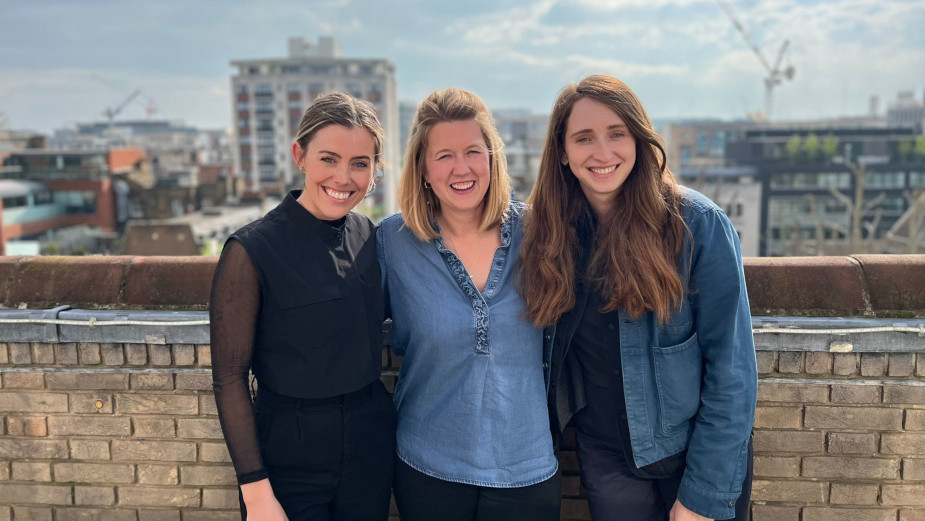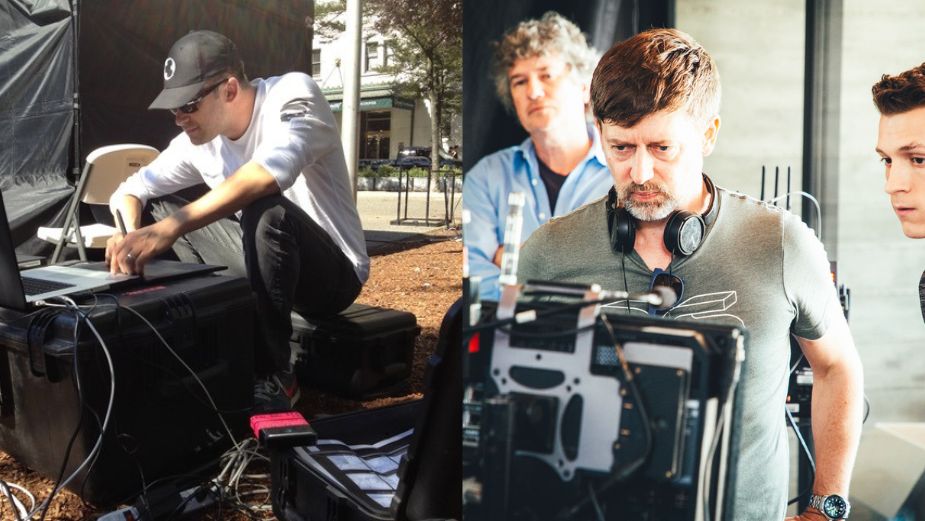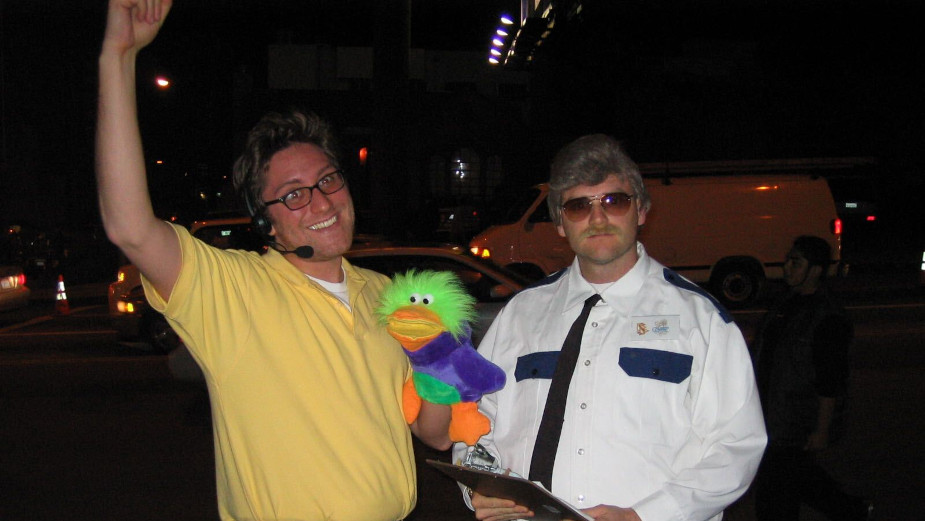In the production world, synchronisation is key – not just in the execution, but also in creative vision. This remains true on a team-wide level, even going beyond your own country and into service companies abroad, as well as kit equipment, or whatever other moving part you can think of. To reach the final goal, everybody needs to be on the same wavelength. The kind of synchronisation necessary on a macro level is also, however, paramount between different micro parts of the production and post production process. And one bridge that connects the two is arguably the most notoriously important duo in the sphere – the director and the editor.
Here, ‘vision’ is the keyword. Somehow finding a way to not only bridge the on-set and post-set divide, but bind two (or sometimes more as we will see below) brains into one well-oiled machine. What the director has missed during the shoot, the editor needs to miraculously see in a dark room after. What the editor misses, the director needs to express clearly and truthfully – there’s no space for ego here. Shoulder by shoulder, the pair carries an idea through numerous challenges until it arrives in the real world.
So, what is it? What is the key to making this duo of individuals, seemingly very different in nature and with almost opposing sets of skills, work seamlessly together and most importantly – read each other’s minds? It could be mutual respect, a naturally shared vision, or another language they have created and only speak with each other. But, whatever it is, we ventured out to understand more about what makes this somewhat paradoxical relationship so important, as well as how it can become indestructible.
LBB’s Zoe Antonov hand picked some long-standing director-editor duos in the industry and they gave her their stories of understanding and creative success.
ArtClass directing duo Jams x Bash (Jamaal Parham and Bashan Aquart) + ArtClass editor Tyrone Rhabb (seen on the photo above)
Jams x Bash & Tyrone> Like editing, a creative relationship often centres on finding your rhythm. We first met while working on an adidas campaign and have been working on features and advertising campaigns together ever since. We vibed right away – there was this palpable creative energy. We built a bond based on the trust and understanding that we have a shared commitment to support the best idea or most compelling version of what we are creating. Individually, we have influences and experiences that come into play and for us, collaborating means something dynamic – the opportunity to build on ideas but also see opportunity in opposing or differing viewpoints. That’s our secret, if you can call it that, give and take… Along with a massive helping of respect and admiration. Even when there is a strong vision or clear and contained brief, the ability to see things from a different vantage point might be the key to unlocking something that stands out and connects with audiences.
Making things with people and discovering how to infuse each thing with humanity – that’s the fun part of what we all do. And doing it together, with egos left at the door, is the best version of it. A terrific example of our collaboration is The Lion King ‘Generations’ – a spot that commemorates the iconic production’s legacy forged over a quarter-century, connecting generations, bringing them together over a common love and enchantment of the visuals, the music, and the story of The Lion King. We are honoured that it was recently named the Webby’s People’s Voice winner as it validates the feelings we had in the room as the edit was coming together.
RiffRaff directing duo The Sacred Egg (Ed Kaye and Alex Mavor) + Final Cut editor Sam Bould

Sam above and The Sacred Egg below
The Sacred Egg> We’ve had the privilege of staring at the back of Sam’s head for over a decade now. In the early years he had a kind of slicked back hair do, that fell over the top of his crown and draped itself down the back of his cranium. Nowadays he’s got a military shaved style, grade two on top, grade one on the sides. When I get the back of the head that means he’s working. Actually editing. Maybe something isn’t working edit wise and he needs five minutes to try something. Or maybe I’ve suggested something, and probably explained it very badly (but Sam knows how to translate it). He gives it a go, he shows me, but we end up changing it back to how it was before. This happens a lot.
The back of the head is where things actually get done. It’s business time. Concentration and nothing else. However, at some point the chair always swivels. The back of the head becomes a face. And a new Sam appears. A new director-editor dynamic takes place. From an editor, Sam turns into a kind of hybrid person. His new role is now somewhere between therapist, friend and local lunch expert. He becomes the person who helps you go from your shoot self back to your normal self over the course of an edit. You walk in having slightly lost yourself in a dark damp Eastern European warehouse and you leave whole again. Ready to integrate yourself back into a normal life again.
The truth is you need both the back of the head and the front of it to be a successful editor. The human side, that helps directors navigate what is a very strange career with some grounding and friendship. But you need to be a good editor. Someone with all the skills to technically put something together. Luckily both the front and back of Sam’s head are good. And the reassuring familiarity of seeing them amongst all the other unknowns in a director’s life can’t be underestimated. The question is… now he knows how much I stare at the back of his head – will he stick with the military haircut, or will he surprise me by getting something a little more spicy? Go on Sam, grow yourself a rat’s tail.
Sam Bould> The director-editor relationship can be a pretty intense one. You’re stuck in a small dark room with each other, obsessing over 60 seconds of film for days, sometimes weeks on end. It doesn’t matter how skilled you are, If you don’t get on, the relationship won’t last long. Thankfully Alex and Ed have been excellent company in my dark little room for many years now. As the great David Brent once said: “We’re having a laugh, whilst getting the job done”.
From the first promo we worked on together, it was clear these guys were something special and I was going to have to raise my game to get to their level. Every one of their projects has pushed me technically and creatively and I credit them with making me a much better editor.
The edit process can be an emotional experience at times, we’ve had some extreme highs and lows together and I feel strangely honoured to have been witness to their only ever argument. I’m pretty sure I’ve spent more time in hotel rooms with them than I have with my wife. All of this has contributed to a bond and understanding that can’t be replicated. As a result, cutting with Alex and Ed never really feels like a job and I believe that is the key to making great work. Or it could just be that they like coming here for a nap.
The Quarry directing duo JAK (Jo Guthrie and Katie McQuillan) + The Quarry editor Meg Thorne

“I have a cat, I hope you’re not allergic… And a husband, but he’ll be in another room in the flat! Can’t wait to meet you tomorrow.”
That was the first message Meg Thorne sent JAK regarding their first time working together when working from home became the norm back in 2020. Thankfully, JAK weren’t allergic to cats or to Meg’s husband, as, since that first meeting, they have worked together on numerous campaigns for clients such as Cadbury, Panini, and SumUp, with even more big names in the pipeline.
Regarding the importance of editor-director relationships, JAK says, “In the world of commercials everything moves so quickly. So having a shorthand and complete trust in any collaborator ultimately makes the work better, especially in the case of editors and directors. Meg agrees, saying “JAK have a very clear vision with everything they direct, but at the same time they give me the freedom to try things out in the edit and it turns out that we’re always on the same page, which is such a bonus, and honestly it’s vital to producing great work.”
As well as the quality of the craft itself, both JAK and Meg think it’s vital to enjoy the company of who you’re in an editing suite with, “Working with JAK is always such a pleasure and so much fun! Their ideas are hilarious and so creative, and I look forward to every job I do with them,” with JAK adding, “Meg’s attention to detail and amazing work ethic keeps us coming back again and again (not to mention she is also a lovely human).” Despite Meg living in London, Kate living in Ireland, and Jo living in Plymouth, their work together is nowhere near its end and it seems they won’t get off the same wavelength anytime soon.
Framestore director Murray Butler + Cut+Run editor Jon Grover

Jon pictured on the left and Morray on the right
Murray & Jon> Since our first project together, we realised having the opportunity to begin our creative collaborations in the conceptual stage is so valuable and it has led us to a really genuine partnership. We’ve been on set together in locations around the world, which is a real asset on any project, but especially on those where live action and visual effects harmonise to drive the story. We’ve found that it’s vital to have the director and editor working side by side during pre-production and production so the project is set up for success for editing, VFX and post.
Some might think that there’s a rigidity to projects with animation or visual effects characters – like the T-Rex in our spot for the United Nations Development Programme or for the Poseidon sequence in our work for Kohler – but there’s always an opportunity (and sometimes a necessity) to shift the original lightbulb moment to fully express the final idea. The opportunity to learn something new excites us both, and while there is precision in VFX-heavy narratives there is also the opportunity to continuously evolve each piece. We’ve worked on so many great projects in a variety of genres and each one has revealed something we were not expecting, and that becomes a welcomed creative challenge. And while we take the work seriously, we do have a lot of fun. As we sat down together to reflect on our work together over the years, we started looking at photos which are a mix of hard work and camaraderie. We always keep each other honest and laughing and it’s all based on mutual respect. You can’t ask for anything more, really.
CLICKON director Walker Higgins + CLICKON editor Matt Tascone

Walker pictured on the left and Matt on the right
Walker and Matt have shared a close working relationship for over a decade since meeting at SUNY Purchase where they discovered their shared love for film and embarked on a collaborative journey that would shape their careers.
Recognition of their talent first came during their graduation when they were jointly awarded the Sol Turrell award, an annual prize for the best film or filmmaker from the senior year – a prize that had never been split previously but the faculty couldn’t decide between them!
Walker and Matt joined forces on various freelance projects and when CLICKON Studios were looking for an editor, Walker knew Matt would be the perfect addition to the team!
What binds Walker and Matt as a great partnership? It’s their similar sense of humour and excitement about the films and television they love. Walker says: “We try to pull from multiple frames of reference when working on an edit, speaking about rhythm, music, tone, and referencing films, tv, and even musical theatre. Similar things excite us, so when we arrive at something that works, we both feel very motivated.”
Walker has a pragmatic nature, and is very particular about specific shots being removed or the structure of coverage. “I always want the films to feel continuous, no matter the budget. Matt knows and does that without much guidance. But when I do need to give guidance and feedback, Matt enacts notes that I give him, but also looks past the note to see the spirit of what I’m asking for and will sometimes make adjustments I didn’t even see or ask for, but which improve the piece. Whenever we’ve gotten off of a hard shoot, I ask if Matt can edit the footage because I know he’s going to somehow make something great of it. He’s turned projects I was anxious about into some of the best videos we have in our library. It can boil down to this – Matt makes a piece better than I think it’s going to be, every time. I’ve also heard from DP’s that they love knowing Matt is going to work on a piece because his shot selection and editing makes their work look better.”
Walker and Matt have developed a shorthand, and a good understanding of one another. But that’s just a product of time, and the pair don’t imagine either would have continued to invest that time if they didn’t feel a set of shared priorities and mutual respect to begin with. “Ultimately, Walker is a person who I respect a great deal as a director. I also have a great deal of respect for him as a person, which is monumentally important to building trust and understanding over time. If I had to summarise why the editor-director relationship is important – it would just be because those are the two people who will put together the final draft of any given piece. The final voice is an amalgam of the director and the editor. If there’s tug-of-war, the edit can come out confused and muddy. If bad habits are reinforced, the piece will reflect that too. But the best is brought out in one another, then that’s probably the best recipe for doing right by all of the other professionals who have collaborated on the piece so far,” saysMatt.
Neither Walker nor Matt are interested in approaching anything cynically, and both have a vested interest in finding what aspects of any given project they can be passionate about. Matt says: “I can feel his care for the subjects, and I can see his thorough, careful attention to all of his responsibilities to a piece. Any combination of styles and approaches can work between a director and editor as long as the care for the work is genuine.”
Smuggler director Brian Beletic + PS260 editor Maury Loeb

Maury pictured on the left and Brian on the right
Brian & Maury> We have worked on over 75 projects together. The success of this ongoing relationship is rooted in the raw creative spirit we inspire out of each other. What makes two people so creatively compatible probably has something to do with the cosmos. Regardless, it is a fun reality that we take seriously.
Over the years, we have refined the way we collaborate. First, we learned to identify the essence of the story and the relationships within it. Then cut out anything that does not get us closer to the marrow of that essence. Easier said than done, but it never fails us. Next, we always try to be in the same room together. Like how seeing comedy live is always funnier, working together in person is the difference between just getting the job done and surprising each other with how far our creative synergies energise us and twist the project into something better than we ever imagined. A big breakthrough for us was when we play with sourcing different music tracks and edit them together to score each story beat, thus making our own soundtrack. Sometimes it will be 10 different songs sourced in a :60s story. Reading this, you may think that sounds manic, but oddly it isn’t.
We consider this one of the secret sauces we are happy to tell anyone who cares. Brian always shows Maury his shooting boards before the shoot to get the editor’s take, which pretty much guarantees we are never in the edit missing the ideas or coverage we needed. Finally, it’s all about the rhythm. People care more about the rhythm of the story than its content, whether it be dialogue or action, the tempo is what matters most. This is an obscure truth that keeps us inventive.
